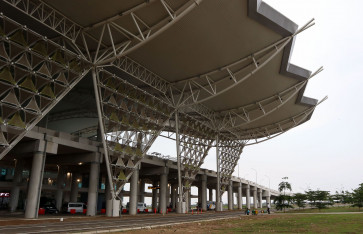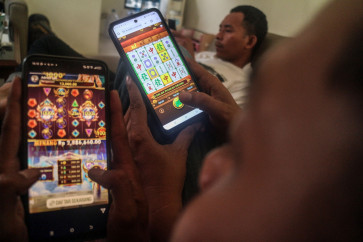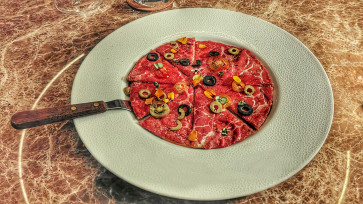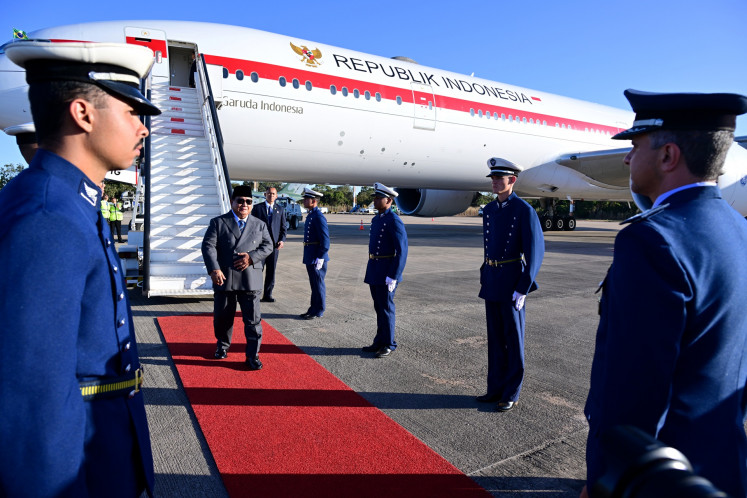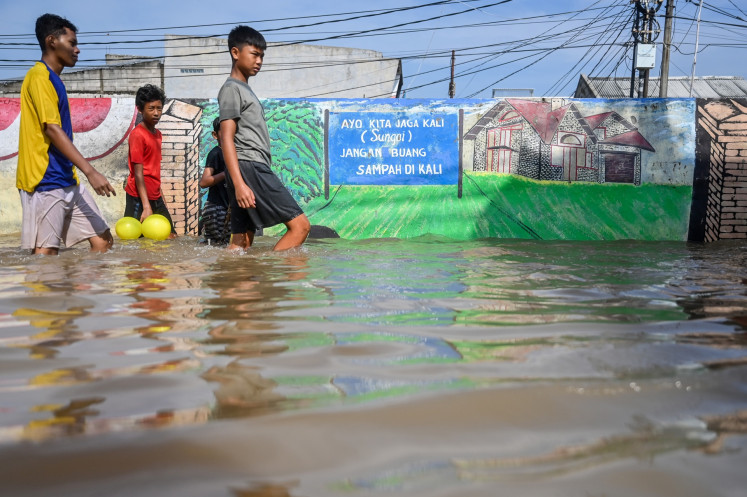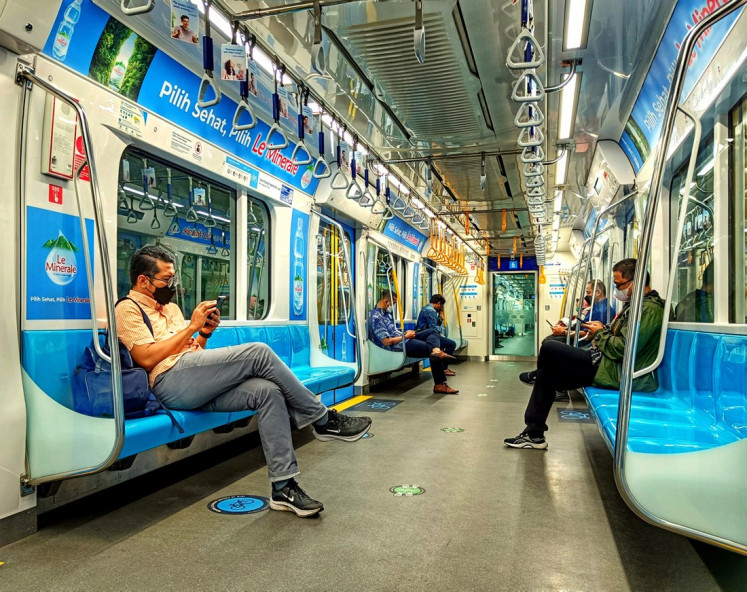Popular Reads
Top Results
Can't find what you're looking for?
View all search resultsPopular Reads
Top Results
Can't find what you're looking for?
View all search results2010 French Wine Tour of ASEAN
The ASEAN Tour 2010 French wine exhibition, which was held on March 14 at Le Meridien Jakarta provided evidence there is optimism for a thriving wine business in the world’s largest Muslim-majority country
Change text size
Gift Premium Articles
to Anyone
T
he ASEAN Tour 2010 French wine exhibition, which was held on March 14 at Le Meridien Jakarta provided evidence there is optimism for a thriving wine business in the world’s largest Muslim-majority country.
At least that was one wine seller’s opinion about the future of his business in a country often rocked by terrorist attacks and home to a region that has adopted sharia law.
“Indonesia is a Muslim country but there are also non-Muslims as well as tourists,” said Gregoire Debre, a senior executive at Sopexa, France’s national marketing and promotion board for French food and beverage products.
“If there is a market for beer and whisky in this country, there must be a market for wine as well,” he reasoned. “We have seen during our night tours of Jakarta that young people drink alcohol in bars, lounges, restaurants and other establishments. So, whether or not people drink wine in this country is a matter of personal preference and alcohol consumption is not really an issue.
“Of course, we are aware that there are Muslim hard-liners in this country. We are also aware there are provinces like Aceh and districts where sharia law is applied. But Indonesia is not all like that. There are places like Jakarta, Bali, Flores and many other places that do not enact Sharia Law”.
The rule of thumb is to market and promote wine in every region, “as long as there is no law forbidding the consumption of alcohol,” he added. “We will never undermine religion. I will never try to promote wine in Aceh or Mecca.”
Last year, Indonesia was not a destination of the ASEAN wine tour, which visited Singapore, Thailand and Vietnam – Southeast Asia’s biggest buyers of French wine. This year, Indonesia and Malaysia were included. Indonesia is a huge potential market, Debre said.
“Unlike people in Singapore, who don’t really know but pretend to know about wine, here, people are motivated and willing to learn and improve their knowledge about wine; this makes Indonesia an interesting market,” he said.
However, a Bordeaux wine representative said in Singapore recently his company had set no goals as far as Indonesia was concerned. “But that’s because they don’t know about Indonesia. Their focus is on Europe and China. They take Indonesia into consideration. This is a mistake,” Debre said.
So, the exhibition made amends as it featured distributors, producers and merchants mostly selling Bordeaux wines, which brings us to the other interesting issue: Vintage. Jon Reeves from Bordeaux wine distributor Borderac Crus & Vins said that his wines were not priced according to vintage and that better vintages did not necessarily command higher prices.
He asked me to taste gold medal winner Chateau Moulin de Canhaut AOC Medoc 2005 (an excellent vintage), priced at ¤5 (US$6.75), and then Chateau Le Pape AOC Pessac Leognan 2002 (a mediocre vintage), priced at ¤8.
He told me that the latter was ready for drinking because after eight years in the bottle, the predominantly Cabernet Sauvignon blend has thoroughly matured, whereas the former is still “nervous” because the Merlot and Cabernet Sauvignon blend has not yet fully unified.
In other words, the 2002 can be enjoyed today. That’s why it’s priced higher, although it will not keep as long as the 2005.
Moreover, because these wines and other Bordeaux wines featured in the exhibition belong to the so-called “affordable, value-for-money” Bordeaux category, the role that vintage plays seems minor.
For example, Chateau Blaignan 2007 (a difficult vintage) from T&C Wines is priced at ¤4.40 while the 2005 costs ¤5.40. The difference is just ¤1, but that is a 22.7 percent increase.
So, in spite of the “vintage-neutral” pricing policy of Reeves’ company, in general vintage does affect price. Cyril Labeille of Cycladis, an international agent for a number of French wineries, told me his 2005 wines are on average 10 percent more expensive than his 2008 wines.
Of course, vintage matters most when it comes to renowned, big-name Bordeaux wines. The average price of a 2005 Chateau Petrus, for instance, is US$2,800, whereas the 2002 goes for $999, according to www.wineaccess.com. The price difference is almost three times, which is ridiculous because the production cost is more or less the same.
“They can do that because their volume of production is small and the demand is steady,” said Frédéric Maurin of Couleurs d’Aquitaine, which specializes in the marketing of AOC Bergerac and Bordeaux wines. And this indicates, as Reeves put it, that the pure value of such overpriced wine lies in its investment value and huge profit potential.
The question is, if you buy a 2005 Petrus for drinking (not for investment), do you get 3 times the pleasure of drinking the 2002 or 100 times the pleasure of drinking a $28.20 wine? Just how sensitive is your tongue? Prestige, however, has no limit.


